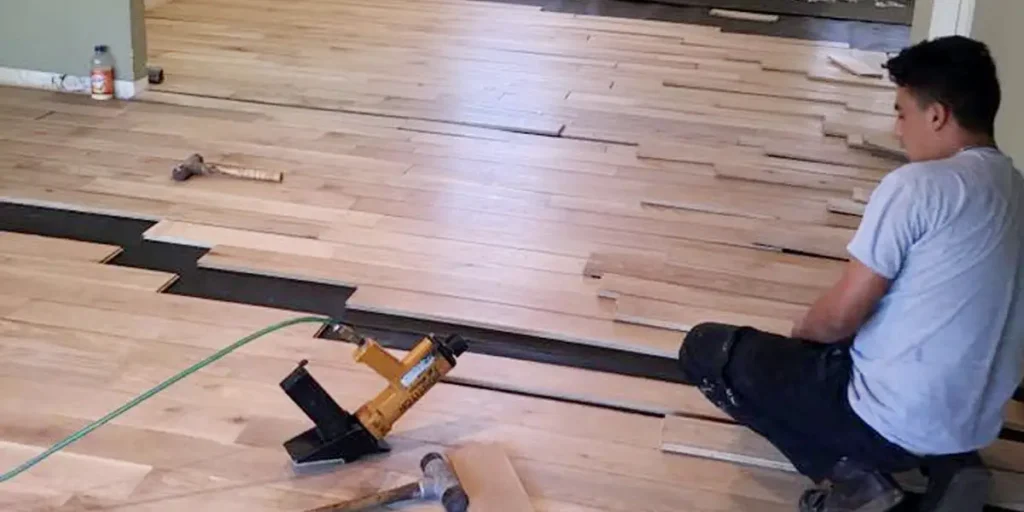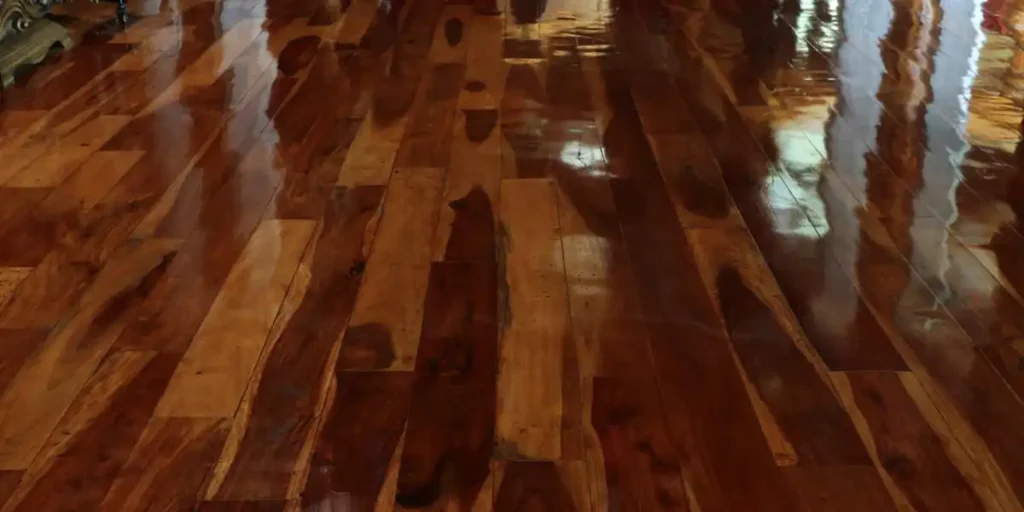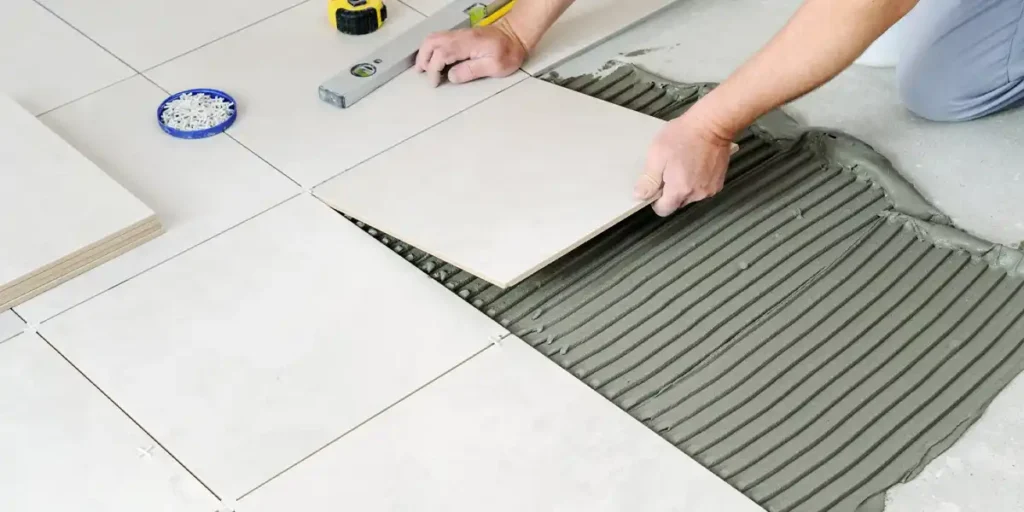Hardwood flooring thickness is an often-overlooked factor that can significantly impact the durability, functionality, and overall aesthetic of your floors. Understanding your options and their implications will help you choose the perfect thickness for your home.
Let’s delve deeper into the specifics of hardwood flooring thickness, from standard measurements to practical applications and maintenance.
Standard Hardwood Flooring Thickness Options
Hardwood flooring comes in several thicknesses, each with unique benefits and ideal applications. Common options include:
3/8 inch (9.5mm): The Lightweight Contender
This thinner option is ideal for low-traffic areas or spaces where height clearance is an issue, such as apartments or rooms with low thresholds. While budget-friendly, it may not offer the same longevity or durability as thicker options, making it better suited for secondary spaces.
1/2 inch (12.7mm): The All-Around Performer
A versatile choice, this thickness strikes a balance between affordability and durability. It handles moderate foot traffic well, making it a popular option for living rooms, bedrooms, and dining areas. Its durability is adequate for most residential applications.
5/8 inch (16mm): The Sturdy Option
This thickness is favored for high-traffic areas like kitchens and hallways. Its added density provides better resistance to wear and tear, making it an excellent choice for homes with children or pets.
3/4 inch (19mm): The Heavyweight Champion
As the thickest standard option, 3/4-inch hardwood flooring offers unmatched durability and strength. It’s ideal for homes requiring multiple refinishing cycles and for spaces subject to heavy use. While it comes with a higher price tag, it provides long-term value.
How Thickness Impacts Durability
The thicker the hardwood plank, the better it can withstand daily wear and tear. Here’s why:
- Scratch Resistance: Thicker boards have a more robust surface, making them less susceptible to scratches and dents.
- Longevity: Thicker planks can be sanded and refinished multiple times, significantly extending their lifespan.
- Structural Stability: Greater thickness minimizes the risk of warping, especially in areas with fluctuating temperatures or humidity.
Thin boards might seem like a cost-effective choice initially, but their lower durability often results in higher replacement costs down the line.
Installation Considerations Based on Thickness
The thickness of your hardwood flooring plays a crucial role in the installation process and overall performance of the floor. Thicker planks, such as 3/4-inch solid hardwood, require a meticulously prepared subfloor to ensure stability and longevity.
An uneven or poorly prepared subfloor can cause issues such as gaps, creaks, or buckling, which not only compromise the floor’s aesthetics but also its durability over time. Thicker planks demand more precise leveling to distribute weight evenly and prevent structural problems.
On the other hand, thinner hardwood options, like 3/8-inch or 1/2-inch planks, offer greater flexibility during installation. These thinner planks are often easier to install over existing flooring, such as tile or plywood, saving time and effort.
However, they may lack the insulating and soundproofing benefits of thicker planks. Thicker hardwood flooring inherently provides better thermal insulation and reduces noise transmission, making it a preferred choice for multi-story homes or spaces where comfort is a priority.
Refinishing Potential and Long-Term Value
The refinishing potential of hardwood flooring is closely tied to its thickness, making it a crucial consideration for long-term value. Thicker planks, particularly 3/4-inch options, are built to endure multiple refinishing cycles usually 3-5 times allowing homeowners to refresh their floors’ appearance over several decades. This makes them an excellent investment, especially for spaces prone to wear and tear.
In contrast, thinner boards, such as 3/8-inch options, may only withstand one or two refinishes before becoming too fragile to sand. Choosing thicker planks not only ensures greater durability but also provides flexibility to adapt to evolving design trends and wear over time.
Choosing the Right Thickness for Your Needs
Selecting the ideal hardwood flooring thickness involves balancing practical requirements with personal preferences. For high-traffic areas like hallways, kitchens, or living rooms, thicker planks, such as 3/4-inch boards, are essential. These provide enhanced durability and better resistance to wear and tear over time, ensuring your flooring retains its beauty in busy spaces.
Budget considerations also play a critical role. While thinner boards, such as 3/8-inch options, are typically more affordable upfront, thicker planks offer superior longevity, making them a cost-effective investment in the long term. Thicker boards can also be refinished multiple times, extending their lifespan significantly.
Your aesthetic goals are another important factor. Thicker planks often feature more prominent grain patterns, adding depth and character to your interior design. They create a bold, high-end look that elevates any space.
Final Thoughts
Choosing the right hardwood flooring thickness is a decision that balances immediate needs with long-term benefits. While thinner options are budget-friendly and suitable for less demanding spaces, thicker boards offer unparalleled durability, refinishing potential, and overall value.
Consider your lifestyle, budget, and installation environment to make an informed choice. Whether you’re designing a cozy living room or a bustling kitchen, selecting the correct thickness ensures your hardwood floors remain a beautiful and functional feature of your home for years to come.
Ready to restore your hardwood floors to their original beauty? Contact Cardenas Flooring for expert cleaning, refinishing, and repair services. Let us handle the hard work while you enjoy stunning, long-lasting results. Contact us now for a free consultation!
FAQs
What thickness is ideal for hardwood flooring in high-traffic areas?
For high-traffic areas like kitchens or hallways, 3/4-inch hardwood flooring is the best choice. Its thicker profile provides enhanced durability and can withstand daily wear and tear, dents, and scratches. Additionally, it allows for multiple refinishing cycles, extending its lifespan significantly. Thinner options, such as 1/2-inch or 3/8-inch planks, may be less durable in such spaces and could require replacement sooner.
Can engineered hardwood match the durability of thick solid hardwood?
Yes, engineered hardwood with a thick top wear layer (3mm or more) can offer comparable durability to solid hardwood. It’s constructed with multiple layers of wood veneers, enhancing stability and resistance to moisture and temperature changes. While it may not allow for as many refinishes as solid hardwood, high-quality engineered hardwood can still last decades, making it a great alternative for areas prone to environmental fluctuations.
Is 3/8-inch hardwood flooring a good choice for residential use?
While 3/8-inch hardwood flooring is a budget-friendly option and suitable for low-traffic areas like bedrooms, it may not be the best choice for spaces with heavy foot traffic or furniture. Its thinner profile makes it more susceptible to damage and limits refinishing options. If durability and longevity are priorities, consider opting for 1/2-inch or thicker planks.
How does subfloor condition affect the choice of hardwood thickness?
A less-than-perfect subfloor benefits from thicker hardwood planks, such as 3/4-inch, as they provide greater stability and minimize the risk of uneven surfaces. Thinner planks, like 3/8-inch, require a flawlessly prepared subfloor to ensure proper installation and performance. If your subfloor has imperfections, it’s worth investing in thicker flooring or addressing subfloor issues before installation.
Can thinner hardwood planks be refinished multiple times?
Thinner hardwood planks, such as 3/8-inch, have limited refinishing potential. Typically, they can only be refinished once or twice before becoming too thin for further sanding. In contrast, 3/4-inch hardwood flooring can withstand 3-5 refinishing cycles, making it a more durable option for long-term use. For areas prone to wear, thicker planks are a better investment.




